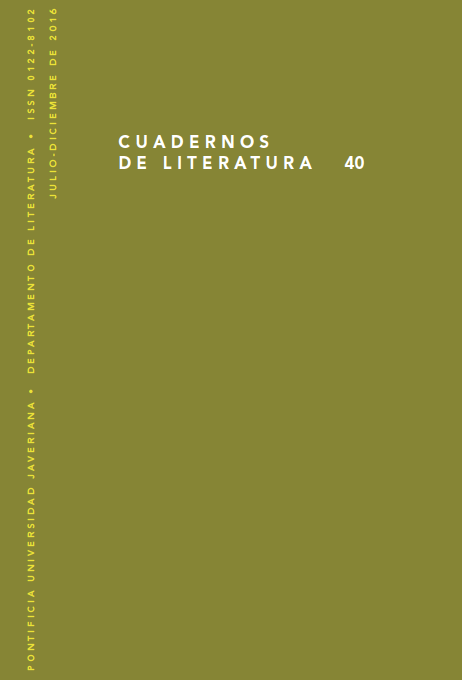Abstract
El presente trabajo parte de la pregunta por cómo se representa la violencia en algunos textos de Roberto Bolaño, particularmente en La parte de los crímenes de 2666. El ensayo propone que la violencia se representa desde un lugar de enunciación que parodia tanto cómo la nota roja y el reporte forense se aproximan al cuerpo femenino para denunciar los mecanismos narrativos que hacen de éste un objeto. Tal representación propone a partir de la parodia unos límites morales entre malas y buenas formas de representación partícipes de la violencia. ¿Malas y buenas en qué sentido? Malas y buenas en relación a una escala de valores y juicios estéticos y ético/morales que Bolaño construye desde un proyecto político sobre la corporalidad.
Cuadernos de Literatura is registered under a Creative Commons Attribution 4.0 International Public License. Thus, this work may be reproduced, distributed, and publicly shared in digital format, as long as the names of the authors and Pontificia Universidad Javeriana are acknowledged. Others are allowed to quote, adapt, transform, auto-archive, republish, and create based on this material, for any purpose (even commercial ones), provided the authorship is duly acknowledged, a link to the original work is provided, and it is specified if changes have been made. Pontificia Universidad Javeriana does not hold the rights of published works and the authors are solely responsible for the contents of their works; they keep the moral, intellectual, privacy, and publicity rights.
Approving the intervention of the work (review, copy-editing, translation, layout) and the following outreach, are granted through an use license and not through an assignment of rights. This means the journal and Pontificia Universidad Javeriana cannot be held responsible for any ethical malpractice by the authors. As a consequence of the protection granted by the use license, the journal is not required to publish recantations or modify information already published, unless the errata stems from the editorial management process. Publishing contents in this journal does not generate royalties for contributors.


